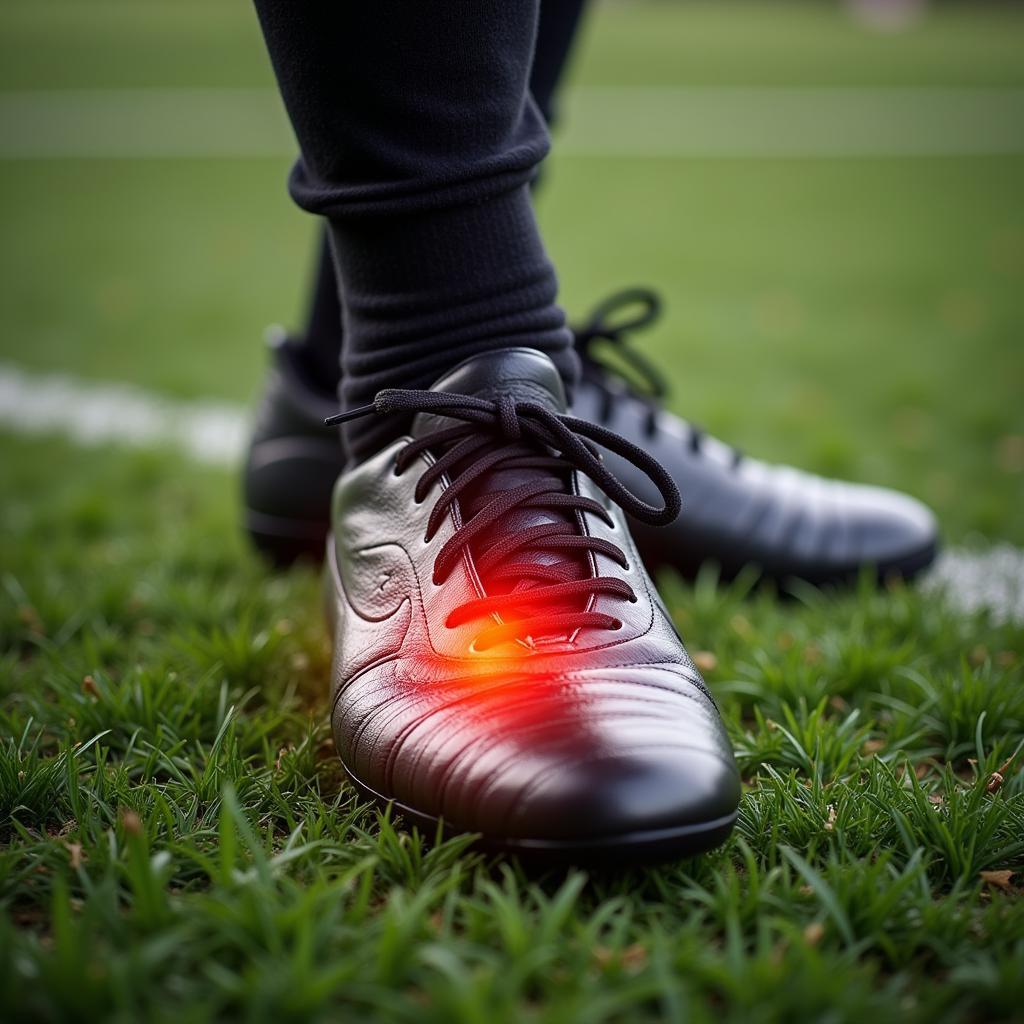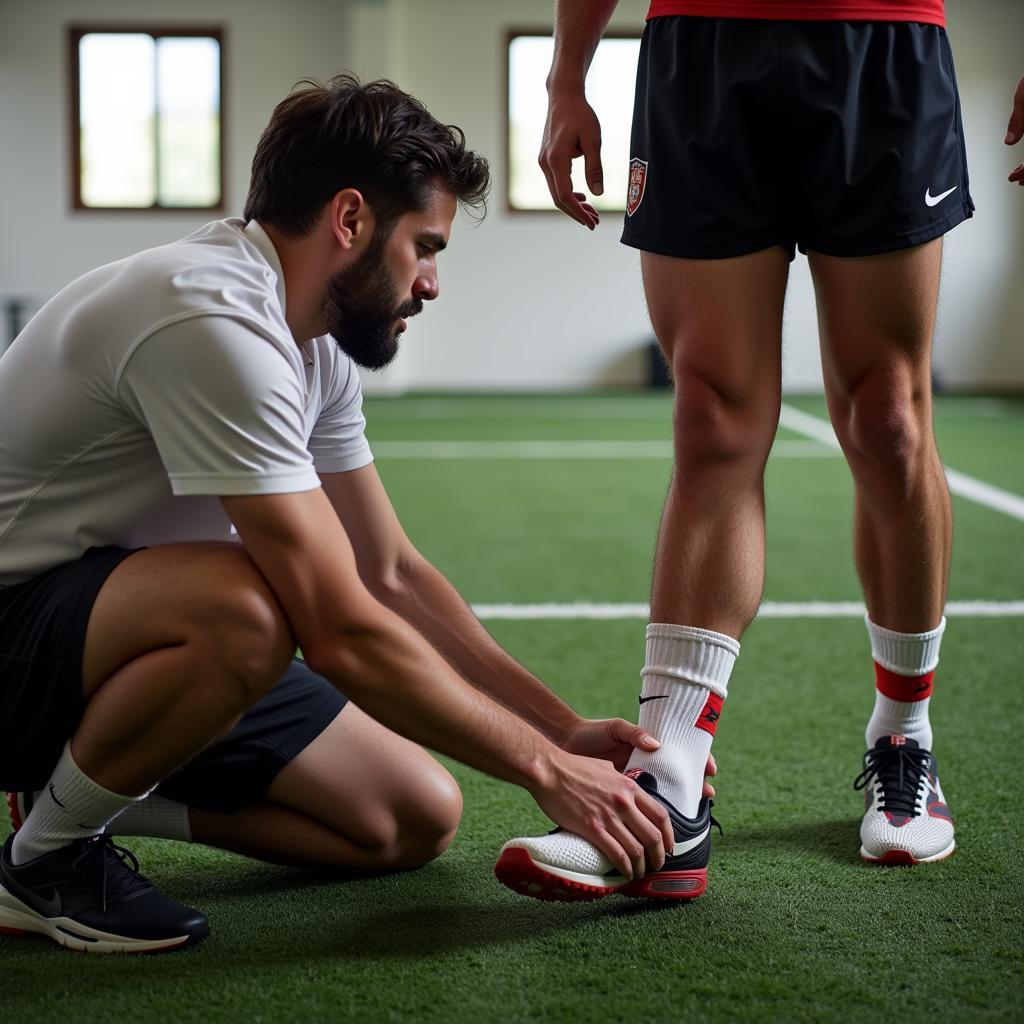Deformed Feet in Football: A Hidden Toll of the Beautiful Game
October 19, 2024Deformed feet in football are a common consequence of the sport’s demanding physicality. While fans marvel at incredible goals and breathtaking skills, the hidden toll on players’ bodies, particularly their feet, often goes unnoticed.
The Anatomy of a Footballer’s Foot
The human foot is a complex structure of 26 bones, 33 joints, and a network of muscles, tendons, and ligaments. This intricate design allows for a wide range of motion, balance, and the ability to generate immense power, crucial for a footballer’s performance.
How Football Can Deform Feet
The repetitive stress of kicking, running, and jumping, coupled with the constant pressure of tight boots, takes a toll on a footballer’s feet. Over time, this can lead to various deformities, including:
- Bunions: Bony bumps that form at the base of the big toe, often caused by ill-fitting footwear.
- Hammertoes: A condition where the toe bends abnormally at the middle joint, often caused by muscle imbalances.
- Metatarsalgia: Pain and inflammation in the ball of the foot, often caused by overuse and impact.
- Plantar Fasciitis: Inflammation of the thick tissue on the bottom of the foot, often caused by repetitive stress and improper footwear.
 Football Boot Pressure
Football Boot Pressure
These conditions can cause significant pain, limit mobility, and impact a player’s performance.
Common Causes of Deformed Feet in Football
While the physical demands of football are a major contributing factor, several other elements can increase the risk of foot deformities:
- Ill-fitting Boots: Tight boots can constrict the toes, leading to bunions and hammertoes.
- Poor Biomechanics: Improper running or kicking techniques can place excessive stress on certain areas of the foot.
- Inadequate Recovery: Insufficient rest and recovery time can exacerbate existing foot problems and increase the risk of injury.
- Previous Injuries: Ankle sprains, fractures, and other foot injuries can increase the likelihood of developing deformities later in a player’s career.
 Footballer Receiving Treatment
Footballer Receiving Treatment
Preventing and Managing Foot Problems in Football
Despite the risks, there are several steps footballers can take to protect their feet:
- Proper Footwear: Wearing properly fitted boots with adequate support and cushioning is crucial.
- Orthotics: Custom-made shoe inserts can help correct biomechanical issues and provide additional support.
- Stretching and Strengthening Exercises: Regular stretching can improve flexibility and range of motion, while strengthening exercises can enhance foot and ankle stability.
- Rest and Recovery: Allowing adequate time for the feet to recover after training and matches is essential.
- Early Intervention: Addressing foot pain or discomfort promptly can prevent minor issues from developing into serious problems.
The Long-Term Impact of Deformed Feet
For many players, the effects of deformed feet can extend beyond their playing careers. Chronic pain, arthritis, and difficulty walking are just some of the challenges they may face.
A Shared Responsibility
Protecting the health and well-being of footballers requires a collaborative effort. Clubs, medical staff, coaches, and players themselves must prioritize foot health and implement preventative measures.
While deformed feet may be a hidden toll of the beautiful game, understanding the causes, risks, and preventative measures can help mitigate the long-term impact on players’ health and careers. Remember, prevention is always better than cure.
Frequently Asked Questions
1. Are there specific types of football boots that can help prevent foot deformities?
While no boot can entirely eliminate the risk, choosing properly fitted boots with adequate cushioning and support is crucial. Consulting with a podiatrist or sports medicine professional can help determine the best footwear options for individual foot types and biomechanics.
2. What are some effective stretching exercises for footballers to help prevent foot problems?
- Calf stretches: Stand facing a wall, place one foot slightly behind the other, and lean forward, keeping the back heel on the ground.
- Toe curls: Sit with your feet flat on the floor and lift just your toes off the ground, then curl them under and hold.
- Towel stretches: Sit with your legs extended and loop a towel around the toes of one foot, pulling back on the towel and holding.
3. When should a footballer consult a doctor about foot pain?
Any persistent pain or discomfort that affects performance or doesn’t subside with rest should be evaluated by a medical professional.
4. Are there any alternative therapies that can help with foot pain and deformities?
Physiotherapy, massage therapy, and acupuncture are some alternative therapies that may provide relief from foot pain and improve mobility.
5. How can coaches help prevent foot problems in their players?
Coaches can promote proper warm-up routines that include foot and ankle stretches, encourage proper hydration, and ensure players have adequate rest and recovery time between training sessions and matches.
You might also be interested in:
For any further assistance or information, please do not hesitate to contact our team at:
Phone Number: 0396443476
Email: [email protected]
Address: 23 Thang 3, Dak Nia, Gia Nghia, Dak Nong, Vietnam.
Our dedicated customer support team is available 24/7 to assist you.